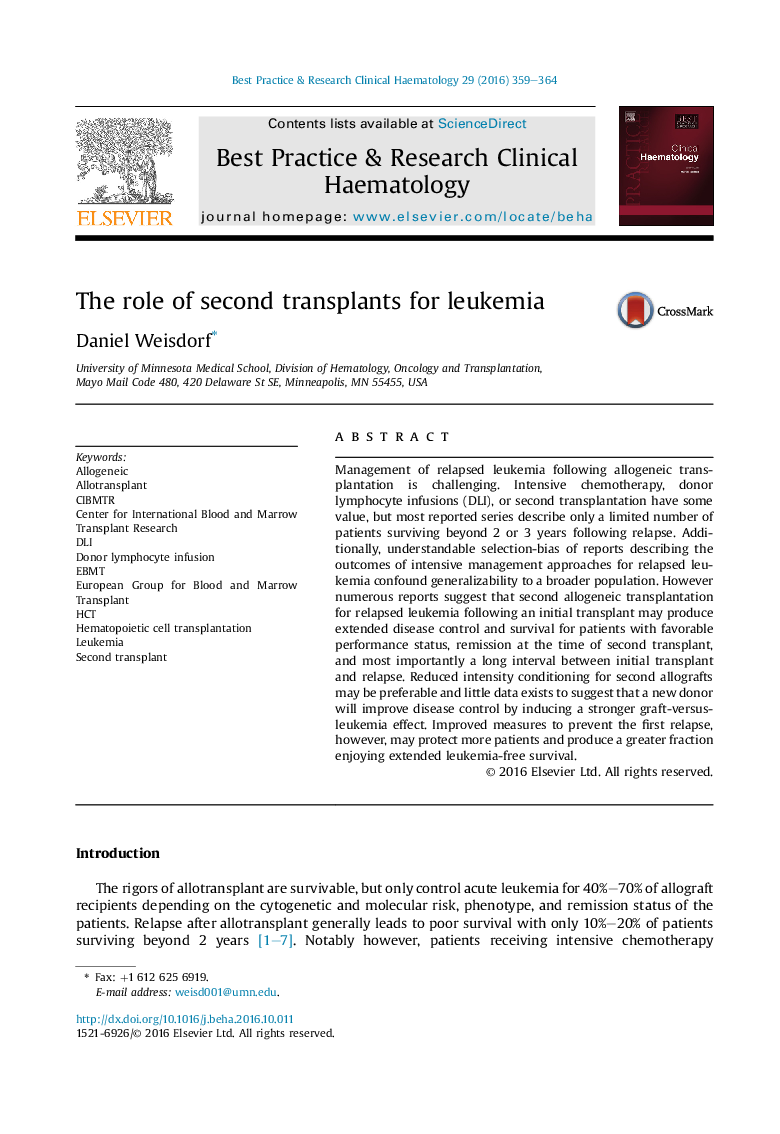| Article ID | Journal | Published Year | Pages | File Type |
|---|---|---|---|---|
| 5523895 | Best Practice & Research Clinical Haematology | 2016 | 6 Pages |
Management of relapsed leukemia following allogeneic transplantation is challenging. Intensive chemotherapy, donor lymphocyte infusions (DLI), or second transplantation have some value, but most reported series describe only a limited number of patients surviving beyond 2 or 3 years following relapse. Additionally, understandable selection-bias of reports describing the outcomes of intensive management approaches for relapsed leukemia confound generalizability to a broader population. However numerous reports suggest that second allogeneic transplantation for relapsed leukemia following an initial transplant may produce extended disease control and survival for patients with favorable performance status, remission at the time of second transplant, and most importantly a long interval between initial transplant and relapse. Reduced intensity conditioning for second allografts may be preferable and little data exists to suggest that a new donor will improve disease control by inducing a stronger graft-versus-leukemia effect. Improved measures to prevent the first relapse, however, may protect more patients and produce a greater fraction enjoying extended leukemia-free survival.
